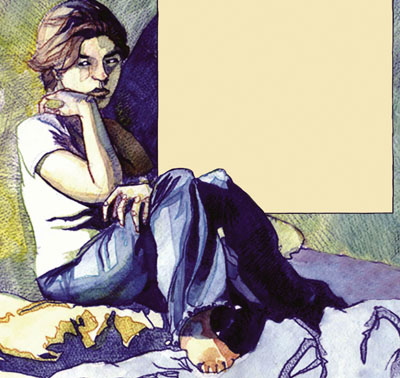A report showing that Morgan Hill has the second highest suicide rate in the county among “youth” between ages 10-24 was released March 3 by the Santa Clara County Public Health Department.
The 214-page report, which covered a period from 2003 through 2015, was conducted by the U.S. Centers for Disease Control and the Substance Abuse and Mental Health Services Administration.
Among its vast findings is one chart that breaks down the suicide rate per 100,000 people by city of residence among youth ages 10-24 that died between 2003-15. Palo Alto was at the top with a 14.1 percent “crude suicide rate,” while Morgan Hill was second with a 12.7 percent. The next highest within the county was Sunnyvale at 6.4.
Morgan Hill has a population of 42,948, while Palo Alto has a population of 66,853, per the report.
Those suicide rate statistics were also well above the county (5.4), state (5.3) and nation (7.4).
After the report was released March 3, local school district officials immediately reviewed the data provided and wanted to be clear that “the statistics that came out of the 11-year study are startling but not a reflection of our student body.”
“What is confirmed by the report is that, over the last 11 years, two Morgan Hill suicides were MHUSD students, the most recent being six years ago,” according to Morgan Hill Unified Superintendent Steve Betando’s extensive statement that can be viewed in its entirety on mhusd.org.
Larry McElvain, Executive Director with Discovery Counseling Center in Morgan Hill, said he was surprised by the report’s findings that had Morgan Hill with such a high rate since the school district has taken extra precautions to help with the mental health of its students.
“I can’t understand why Morgan Hill would be different than anywhere else,” said McElvain, whose business provides therapists for counseling services at each of the MHUSD school sites. “We do a lot of service with MHUSD that is related to suicide prevention. They do more than most school districts.”
McElvain added school district and city leaders have also taken preventative measures such as adopting the YMCA Project Cornerstone’s 41 Developmental Assets (which help with suicide prevention) and the formation of the Youth Advisory Committee. A YAC student presents one of the assets monthly at city council meetings to show how they are using it in school and life.
Palo Alto suicides prompted study
The mental health report is also clear that “the request for epidemiological assistance was prompted by concerns about suicides among students in the city of Palo Alto.” It outlines that between May 2009 and January 2010 there were five known suicides among incoming, current and alumni of two high schools in Palo Alto.
“Epi-Aid investigations are rapid, short-term investigations of urgent public health problems,” the report reads. “To initiate an Epi-Aid, public health authorities, such as a health departments or ministries of health, must make a formal request to the CDC for assistance.”
In this case, county health officials made the request.
County Health Officer Sara Cody said “the data provided in this report shed some light on youth suicides in our county.” She called cases of suicide “complex” with a wide variety of causes.
“The information in this report provides our communities and partners with a starting point, a foundation upon which we can build our understanding of how to best prevent suicide,” Cody continued.
During the report’s time frame, there were 229 suicide deaths in the county among youth, including 13 in Morgan Hill. Investigators, however, defined youth as individuals from age 10 through 24, which includes both adolescents and young adults.
Among the 229 suicide deaths recorded, the average age was 20.4 with 66.4 percent between the ages of 20-24 and 75 percent were male victims. Broken down by demographics, the report showed that nearly 40 percent of suicides were White, non-Hispanic; 27 percent were Asian/Pacific Islander; 27 percent Hispanic and 4 percent African American.
“One of the first steps in reducing the stigma around depression and other mental health issues, including what may lead to a suicide, is to know the facts,” said Cody in her response to the findings. “This report provides a number of facts about youth suicide in Santa Clara County. Individuals, schools, community organizations, businesses and government organizations, as well as the news media, all have a role to play in reducing stigma and preventing suicide in our community.”
Another statistic found in the report were that suicide was the second leading cause of death among youth in 2014.
Other findings
According to the report, the four objectives of the investigation were to:
• Characterize the epidemiology of, and trends in, fatal and nonfatal suicide behaviors among youth occurring from 2003 through 2015 within the county;
• Examine the degree to which media coverage of youth suicides occurring from 2008 through 2015 met safe suicide reporting guidelines. The most common violations included descriptions of methods of suicide and locations of suicide-related injury within the text of the article, according to report;
• Inventory and compare youth suicide prevention policies, activities and protocols used in the community to evidence-based and national recommendations.
“Some, but certainly not all, of our questions about youth suicide and suicidal behaviors have been addressed by this report,” Cody concluded. “Regardless, we all must continue the work to find solutions and prevent suicide in our community, among our youth and at every stage of life.”
The full report can be viewed at sccphd.org/epi-aid.








